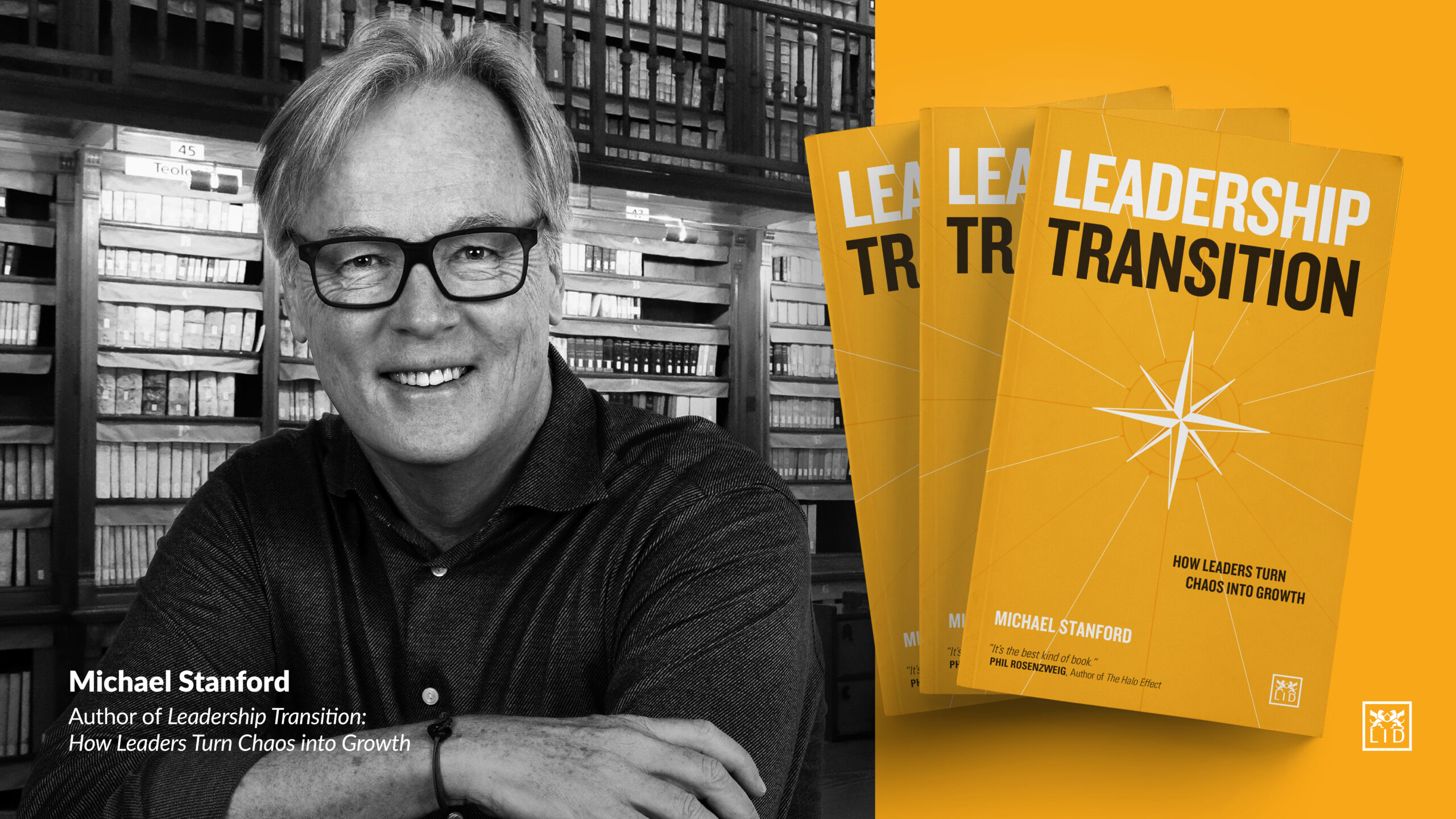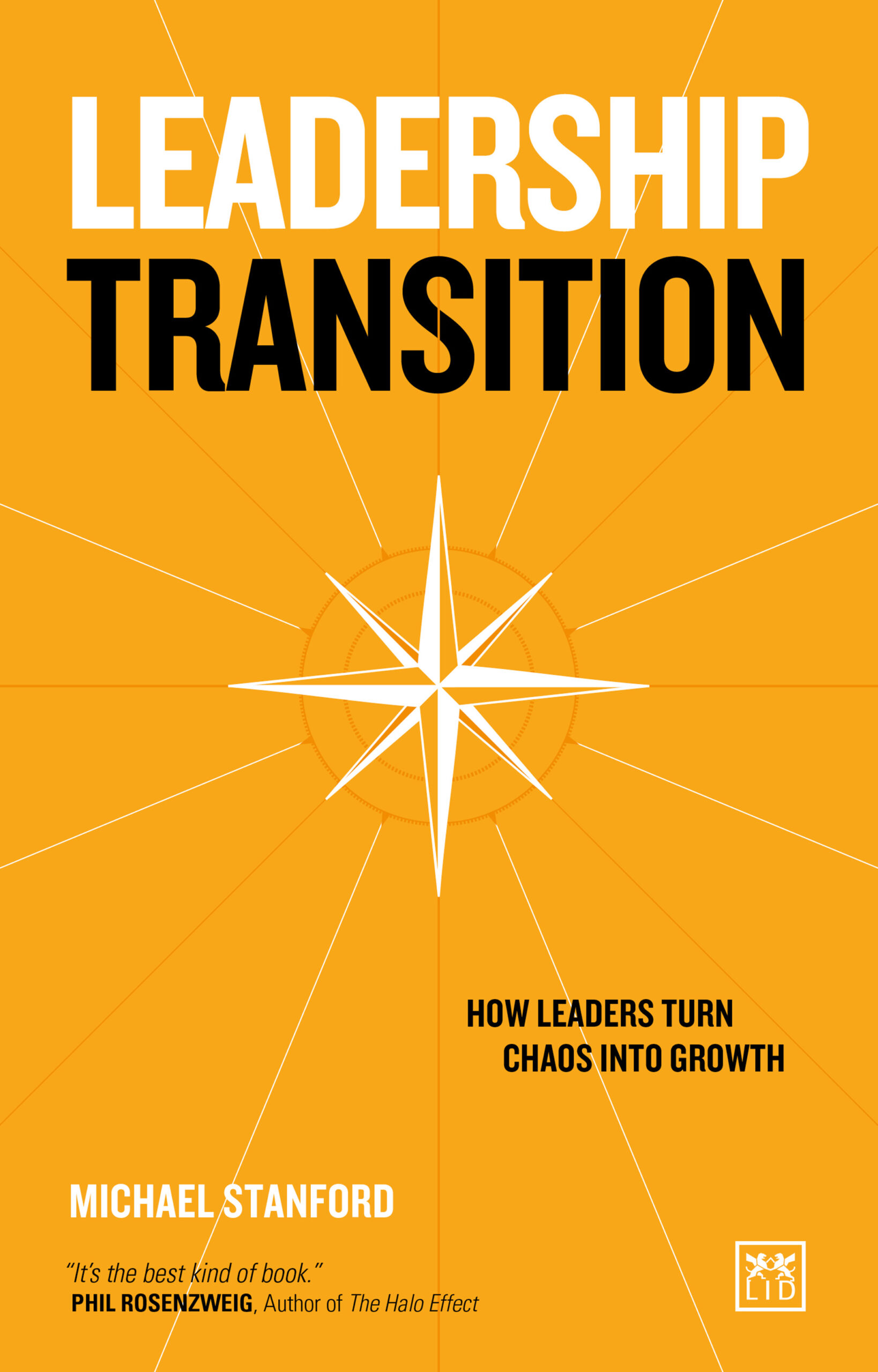|
Why Chaos Isn’t Always Bad with Michael Stanford
Why Chaos Isn’t Always Bad

By Guest Contributor Michael Stanford
Author of Leadership Transition, Michael Stanford, reveals how sometimes chaos can be helpful for leaders.
The best definition of leadership that I’ve seen is that leaders are responsible for creating order out of chaos. In leadership, chaos – the unknown, the unpredictable, the confusing – comes in the form of new bosses, new competitors, new technologies, changing cultures that we’re expected to support, peers and team members who behave in unusual (to us) and sometimes suspicious ways, acquisitions, restructurings, a health scare at home or the passing of someone close to us. Chaos may even come in the form of a growing uneasy feeling that you really don’t want the promotion that you’d imagined would fulfil you, that you aren’t really sure if you’ve chosen the right career after all, or that you’ve outlived the current version of you.
Humans don’t like to be confused, and so we resort to all sorts of tactics to bring order into our lives. We design strategies and plans. We list out our career objectives and develop corporate cultures. We define success to the finest detail, and we organise ourselves in the pursuit of that success. We treat chaos as the enemy and order as our friend, and for the most part, we are right to do so. Throughout our long evolutionary history, chaos has been a threat. We’ve struggled to earn predictability and stability so that we can minimise danger and continue to live out our lives with some sense of security.
Our instinct for order is strong, but it isn’t the entire story of what it means to be human. It might not even be the most interesting story: chaos might be the bringer of danger, but it is also the bringer of creativity. Without chaos we are stagnant. With chaos, we are forced to create the new and the better. In leadership, the chaos we face pushes us to adapt, to imagine a different version of what could be, and to imagine a better version of ourselves.
Two recent stories from my leadership development practice illustrate the creative usefulness of chaos. In the first story, a leader who had worked for twenty years in his organisation and who had earned his way to an important marketing role in the organisation’s largest region was struggling to make sense of the arrival of a new CEO. The CEO had brought with him a team of new senior leaders, and suddenly the executive found himself working towards new strategies he didn’t recognise in a shifting culture that he didn’t like and taking orders from leaders who he didn’t know. Worse, the 20 years of service that once worked in his favour now made him vulnerable to being seen as ‘old school’, especially by the new arrivals. In sorting out how to react to his new circumstances, the leader’s essential question was: to what extent should I bend myself in the direction of the new winds, and to what extent can I change the direction of the winds according to my strongest values, my deepest beliefs, and my own understanding of what is best for the organisation. After deep work to identify which of his values and beliefs were flexible and which couldn’t be, the leader decided to stick with his usual direct approach to leadership. He accepted to follow some of what was new, even if he didn’t understand all of it. He worked hard to learn from the fresh perspectives of the new leadership. But he respectfully and honestly called out decisions, directions and behaviours that he believed worked against the good of the organisation, even if calling these things out might play into the hands of people who labelled him as ‘old school’. In short, the executive created for himself a clear picture of who he wanted to be, and how he wanted to express his developing self in his new leadership circumstances. That picture built on what he believed was essential to his values and beliefs but acknowledged that some creative flexibility around the edges might help him. In the end, senior leadership appreciated him enough to ask him to take on the leadership of one of the organisation’s largest businesses. Now he exercises his leadership on a much larger platform. Our executive responded to the chaos of his new circumstances by creating a clear sense of the leader he wanted to be, and by doing his best to live up to that creation. He used his chaos as a crucible for his own transformation.
Another executive I’ve worked with recently had a similar transformation. She had worked hard through her career to earn her way up the ranks of the functional hierarchy in a large, complex and challenging company. Two recent events have brought chaos into her world: a promotion into the senior functional role of the company’s most important region, and structural and cultural changes in the company. The promotion was the next-to-last step on the path to becoming the chief functional officer of her function, a role that she had always imagined would be the pinnacle of her career. But the cultural change raised questions about what really made for the best story of her professional life. As she struggled with a souring culture, she also paid attention to the growing doubts she had about her old definitions of career success. After some deep and honest exploration regarding what success really was for her, the executive decided to leave the organisation to become the lead of the same function in a smaller organisation closer to the country of her origins. While the new role had a smaller scale and scope, it brought with it a chance to practice her leadership on a simpler and more creative stage. While the executive in the first example used his chaos to understand his values better, this leader’s chaos helped her to create a wiser, more mature definition of success that was hers, not someone else’s.
Chaos might bring danger. It might feel uncomfortable. It’s true that evolution has programmed us with strong reflexes to avoid chaos. But it’s also true that we can use moments of chaos in our lives to rethink our most important narrative about who we are, about what is most important to us, and about which relationships deserve our attention. For all its discomfort, chaos can be a wonderful opportunity for rebirth.
ABOUT THE AUTHOR
Suggested Reading
 This groundbreaking book explains how we can use chaos as fuel for growth. Integrating clinical insights with personal stories and case examples gathered over three decades as a leadership practitioner, researcher, consultant and coach, Michael Stanford helps leaders understand why we react the way we do when the challenges around us feel too heavy to bear.
This groundbreaking book explains how we can use chaos as fuel for growth. Integrating clinical insights with personal stories and case examples gathered over three decades as a leadership practitioner, researcher, consultant and coach, Michael Stanford helps leaders understand why we react the way we do when the challenges around us feel too heavy to bear.

 Michael Stanford is the founder and Managing Director of Summit Leadership, a boutique leadership development organization which supports leaders and their organizations through significant change. He was the head of the Transformational Leadership Practice (EMEA) at Korn Ferry. Prior to that, he worked as a business leader and consultant in a leading business school. Michael resides in Switzerland.
Michael Stanford is the founder and Managing Director of Summit Leadership, a boutique leadership development organization which supports leaders and their organizations through significant change. He was the head of the Transformational Leadership Practice (EMEA) at Korn Ferry. Prior to that, he worked as a business leader and consultant in a leading business school. Michael resides in Switzerland.